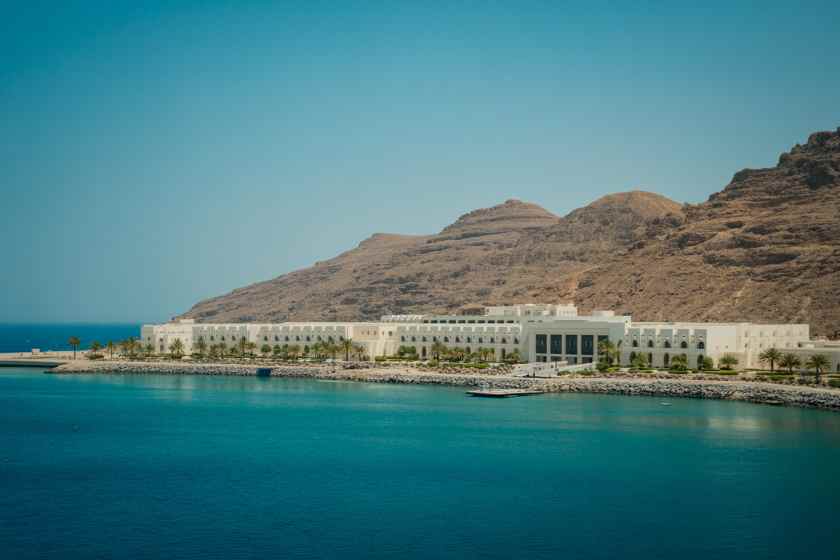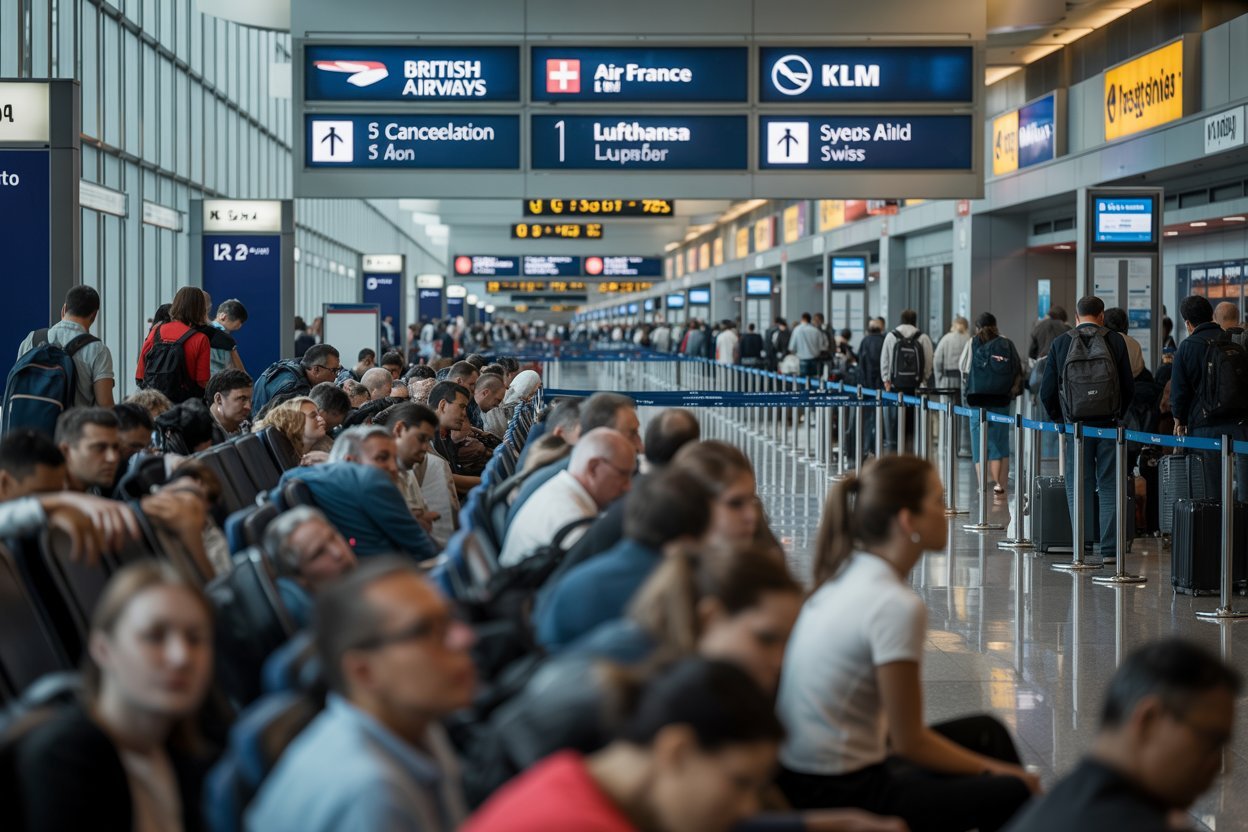читайте также
 Barcelona Joins Venice, Amsterdam, Kyoto, Hawaii, and Santorini in Raising Tourism Taxes in 2026: What Travelers Need to Know
Barcelona Joins Venice, Amsterdam, Kyoto, Hawaii, and Santorini in Raising Tourism Taxes in 2026: What Travelers Need to Know
 China’s Hotel Construction Pipeline Surges to Record High: Nearly 3,700 Projects Underway
China’s Hotel Construction Pipeline Surges to Record High: Nearly 3,700 Projects Underway
 Oman’s Tourism Surge: Hotels Record Double-Digit Growth in Revenue and Guests in 2025
Oman’s Tourism Surge: Hotels Record Double-Digit Growth in Revenue and Guests in 2025
 Thousands of Passengers Grounded Across Europe as Airlines Face 65 Cancellations and 1,824 Delays
Thousands of Passengers Grounded Across Europe as Airlines Face 65 Cancellations and 1,824 Delays
 UK Braces for Major Snowstorm: Heavy Snow and Freezing Temperatures Disrupt Travel Nationwide
UK Braces for Major Snowstorm: Heavy Snow and Freezing Temperatures Disrupt Travel Nationwide
 Where to Travel for Christmas 2025: From Jerusalem and Germany to Wintertime Georgia
Where to Travel for Christmas 2025: From Jerusalem and Germany to Wintertime Georgia
The World Is on the Move Again: How Tourism Will Grow in 2025–2027 — and What It Means for Countries and Brands

Where global tourism is heading in 2025–2027: verified data from UN Tourism, WTTC, and Phocuswright on demand, digital sales, and sustainability. Regional trends across Europe, the Middle East, and the Asia-Pacific region.
Tourism Enters a Confident Growth Phase
2024 marked the full recovery of international travel, and in the first half of 2025, global arrivals rose another 5% compared to 2024 — already exceeding the pre-pandemic level of 2019 by 4%. That’s about 690 million international trips between January and June — 33 million more than a year earlier.
Spending is even more impressive: according to WTTC estimates, international tourism expenditures in 2025 will hit a historic record of around $2.1 trillion, while the overall contribution of travel and tourism to the global economy will reach $11.7 trillion, accounting for 10.3% of global GDP.
Phocuswright notes that global gross bookings in 2024 reached around $1.6 trillion and are expected to climb to $1.8 trillion by 2027 — confirming a steady trend of growing demand and deeper digitalization.
The Digital Shift: Online Channels, Personalization, and Smart Sales
Digital booking has become the default model of traveler behavior: users compare options through mobile apps, assemble trips in one click, expect transparent pricing, and instant confirmation. Phocuswright’s 2025 research highlights a strong return to growth and accelerating digital transformation across key markets.
The next frontier is AI personalization and autonomous agents — systems that suggest routes, recommend activities, and remove friction at every stage, from check-in to refunds. According to the World Economic Forum, the tourism sector stands at a “transformational growth” crossroads, where data and automation are the critical drivers of competitiveness.
Regional Outlook: Where Growth Is Fastest
Europe. In 2025, international spending across the region is increasing at double-digit rates. France and Spain remain leaders, both preparing for record-breaking visitor numbers. Yet autumn data already indicate a slight slowdown in Spain, underscoring seasonal volatility.
Middle East. The region is consolidating its position as a destination for culture and luxury, with strong investment flows and a focus on high-end experiences. A new model of tourism growth is emerging here — through authentic cultural, wellness, and gastronomic offerings.
Asia-Pacific. The Asia-Pacific region remains a key engine of digital growth and online distribution. Since 2025, Phocuswright has renewed its market reports to reflect the rapid acceleration in e-commerce and mobile bookings.
New Traveler Priorities: Value, Convenience, Responsibility
Travelers are becoming more discerning: they look for the best value for money, transparent conditions, convenient services, and sustainability — from eco-friendly logistics to energy-efficient hotels. The balance between growth and environmental responsibility is becoming central. Those who focus on sustainable consumption and responsible investments will define the industry’s long-term success.
Technology and Innovation: AI Recommendations, Big Data, and Automation
AI-powered travel suggestions, dynamic pricing, automated content generation, and 24/7 support agents are no longer “nice to have” — they are the minimum standard for a competitive product. The winners are those who build data as a product: a unified guest profile, end-to-end analytics, and privacy by design.
Case Study: Wyndham Grand Batumi Gonio — A New-Generation Luxury Resort
The Black Sea coast of Adjara, Georgia, is becoming a notable point on the global luxury tourism map. Wyndham
Grand Batumi Gonio is an ultra all-inclusive resort complex in the Gonio district (just 10 minutes from the Turkish border). It combines several hotel buildings and residences with an expansive resort infrastructure and private beachfront access.
The Ultra All Inclusive format includes premium dining, a wellness zone, and numerous seaside activities. The complex features multiple buildings with both hotel rooms and branded residences. One of them, the Aqua Tower, will include a medical center and aquazone, with phased openings starting in 2026.
For guests, this resort blends luxury service, family infrastructure, and wellness leisure — a model that perfectly reflects the tourism trends of 2025–2027: the integration of technology, sustainability, and premium experience.
Why it’s significant:
• All-Inclusive 2.0: A premium format combining strong gastronomy and curated experiences that saves time and delivers maximum comfort.
• Quiet Luxury by the Sea: An alternative to overcrowded Mediterranean destinations, offering comparable service and authenticity.
• Seasonality and Accessibility: Close to Batumi Airport and the Turkish border, with expanding regional flight routes and Black Sea connectivity.
Sustainability: Balancing Growth and Responsibility
As travel volumes rise, smart destination management becomes essential — setting capacity limits, supporting local businesses, improving energy efficiency, and managing waste and water responsibly. In Europe, sustainability is already a core strategy; in the Middle East, it’s an opportunity to build new resorts as “green” from day one. International tourism bodies promote the “growth through sustainability” approach — preserving both nature and cultural heritage as key assets.
Risks and Opportunities in 2025–2027
Macroeconomic volatility and regulations. Demand fluctuates by market — as Spain’s experience shows, seasonality can change rapidly. The answer: diversify source markets and offerings.
Infrastructure constraints. Overloaded airports, visa centers, and transport systems. The answer: manage flows and promote secondary destinations.
Technological gap. AI and data-driven systems are becoming the new standard. The answer: implement CDP, ML-based recommendations, and chat agents with strict data protection.
What Industry Players Should Do
Digitize the guest journey end-to-end — from booking to checkout.
Personalize offers — dynamic packages, wellness, and eco options.
Invest in content and reviews — UGC, video storytelling, local narratives.
Embed sustainability — energy, water, and waste KPIs; local sourcing.
Expand geography and seasonality — secondary cities, shoulder seasons, themed experiences.
Conclusion
Global tourism is entering 2025–2027 with a positive trajectory: rising travel volumes, record spending, and an ever-growing role for digital and AI-driven technologies. The winners will be those who combine convenience, value, and responsibility — delivering memorable yet sustainable experiences. For destinations and brands, this is an opportunity not just to grow traffic but to build lasting loyalty among a new generation of travelers.





